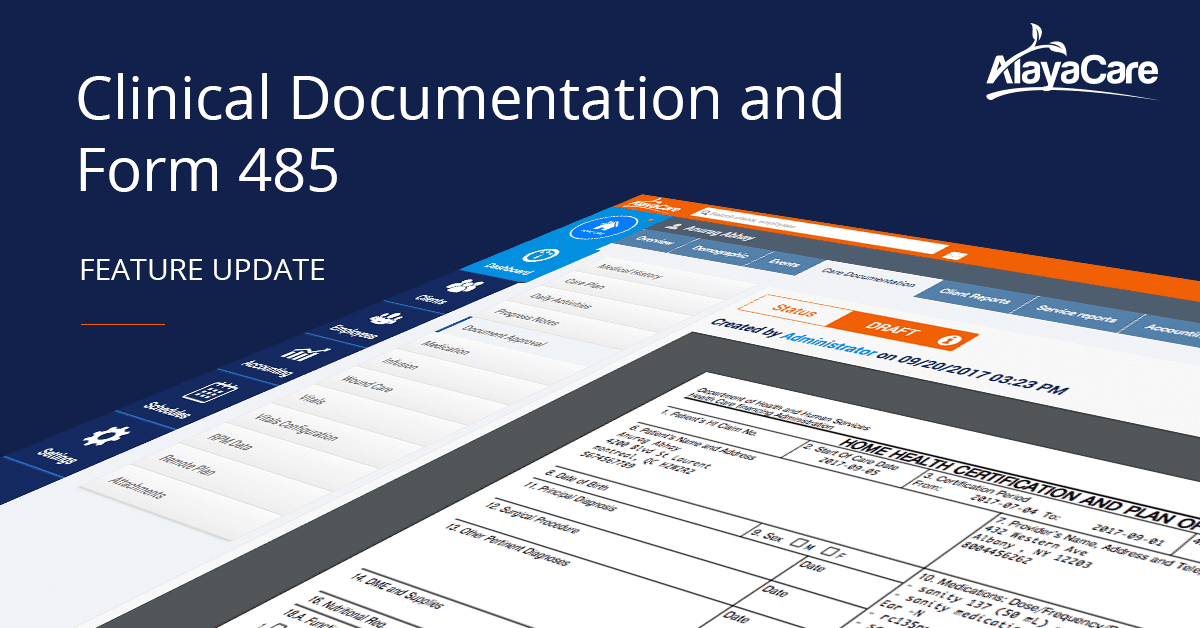Blog
Coordinate and Integrate Care With the Right Software

The business of home care is about the well-being of clients, and care for those clients is best provided in a harmonized fashion. Each client, in the role as patient, connects with the health-care system in various ways.
Clients of any home care agency are best supported when the full spectrum of their caregiving team works in tandem, with the same up-to-date information, understanding what that person needs and when. Yet this can be difficult to do when countries around the globe are grappling with the sticky problem of fragmented care.
There’s no question that coordinated care is integral. It improves the quality of life of patients, accelerates the efficiency and effectiveness of caregivers, and trims health-care costs. In fact, the New England Journal of Medicine, one of the world’s top medical publications, considers coordinated care an integral component in the transformation of modern health care. In a recent post it identified the four pillars of coordinated care:
- Easy access to health care services and providers.
- Good communications and effective care plan transitions between providers.
- A focus on the total health care needs of the patient.
- Clear and simple information that patients can understand.
To that, we say: technology, enter stage right.
Leverage the flow of data
The right software can facilitate the coordinated care of an agency’s clients, and permit any member of their health-care teams to have real-time information that directs clinical decision making.
For home care agencies in the market for new software, it is wise to consider this larger picture of connectivity beyond just the day-to-day needs of the agency-client relationship — and to tick the boxes of all best practices related to coordinated care.
AlayaCare’s end-to-end software built to tick those boxes. Key features include:
Fully-integrated 485
The 485 plan of care links physicians with agencies and their patients. It provides transparency into a client’s health status, along with diagnoses, medications, allergies and more.
Traditionally the 485’s drawback is that it’s paper-based, resulting in a number of cascading issues that include risk of human error, illegibility, and misplaced/damaged documents. Fortunately, software like AlayaCare’s fully-integrated, electronic 485 can directly contribute to far more effective coordinated care, not to mention empower an agency’s staff to accomplish more in less time. (We dive deeper into its benefits in this story.)
Customized portals
At AlayaCare, client portals can be created for any health-care team member. Physicians, nurses, therapists, caregivers, family members: with permission, each can log-in and view a client’s profile and key vitals. That way they can stay apprised of their patient/client/loved one’s status, helping ensure a proactive care plan and rapid responses to any fluid situations.
Through the AlayaCare client portal, users can glimpse past and upcoming visits, assessments, progress notes, and more details on their current level of care. Meanwhile, clients and family members can access content to guide better self-management — because the patient is also part of a coordinated care team.
Application Program Interfaces (APIs)
APIs are like bridges that connect roads across a river. Without the bridges, those roads remain dead-end streets. Similarly, without APIs, software applications sit like a dead end street — with the information going nowhere.
AlayaCare’s software solution is equipped with APIs and the ability to support third party integrations are the closest thing to a true platform in home care today. By connecting data points between each other, information can flow freely, providing relevant information to key stakeholders wherever and whenever it is needed.
Remote patient monitoring
One of our favourite — and an important — topic these days, remote patient monitoring (RPM) offers many benefits across the care continuum. GPS location streaming in real-time in particular offers much-needed transparency to promote truly integrated care, facilitating cost savings, efficient interactions between all health-care providers, and important preemptive care when needed. All of which means: improved patient outcomes.
The future of coordinated care is bright: we will soon see a day when integrated, virtual and collaborative care models will truly break down silos, and information will flow back and forth along the continuum. Data will be on-demand, across any screen and in real-time.
We’re getting there — and that’s why it’s important to choose a software solution now that can remain relevant into the future.
To learn more about the AlayaCare solution, drop us a line and ask for a free demo.



